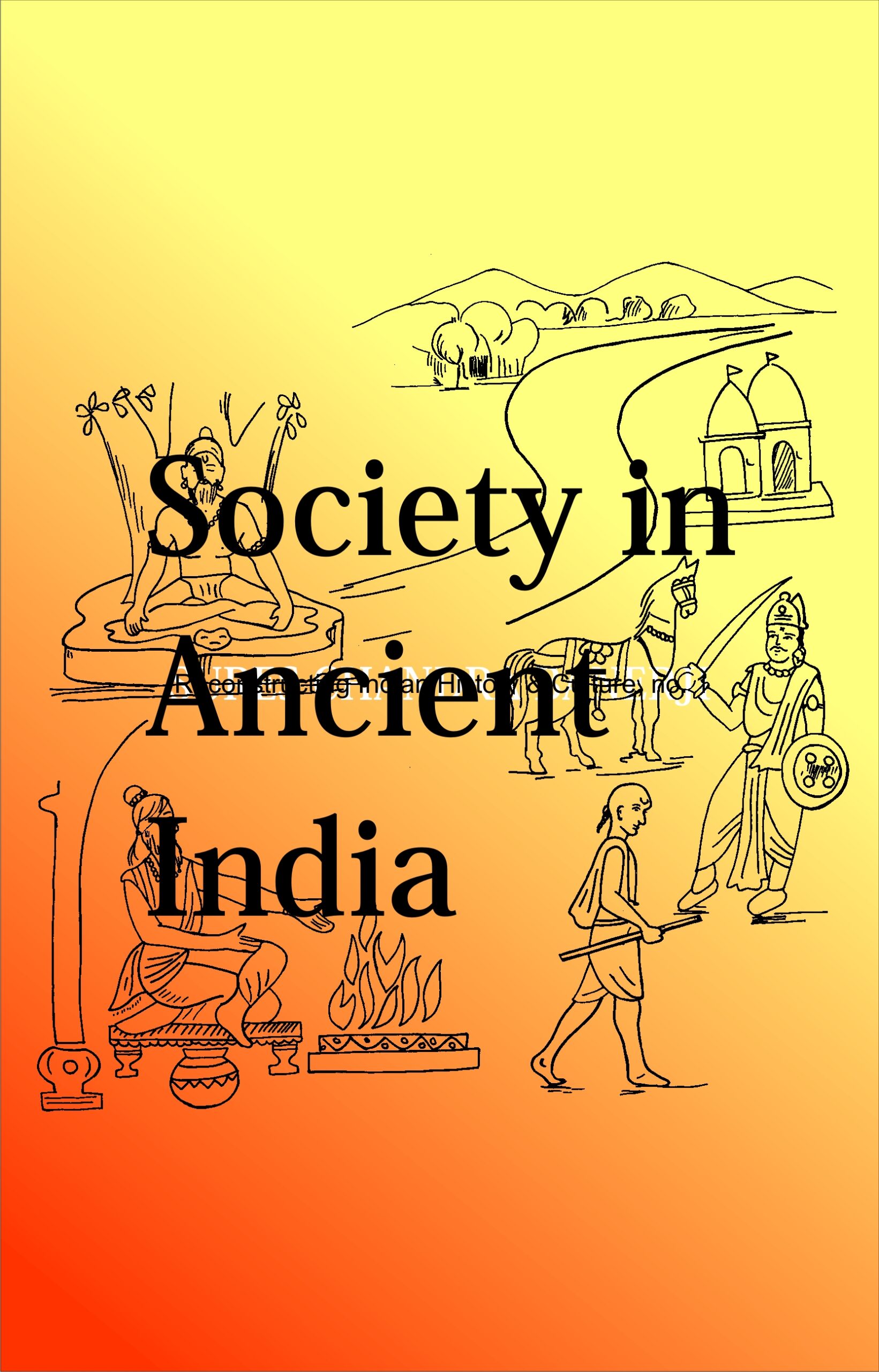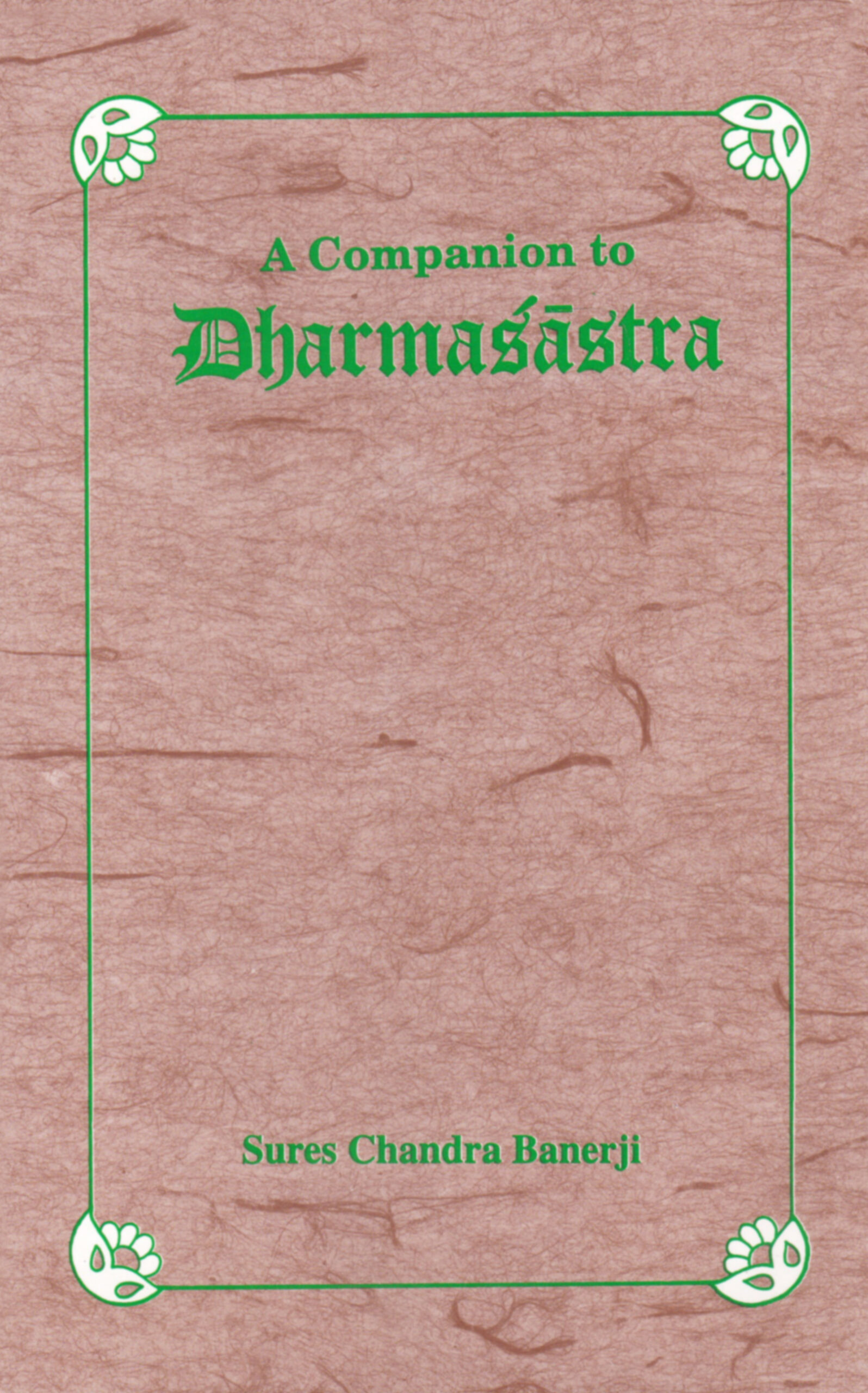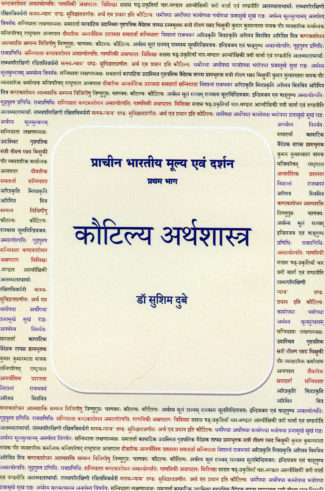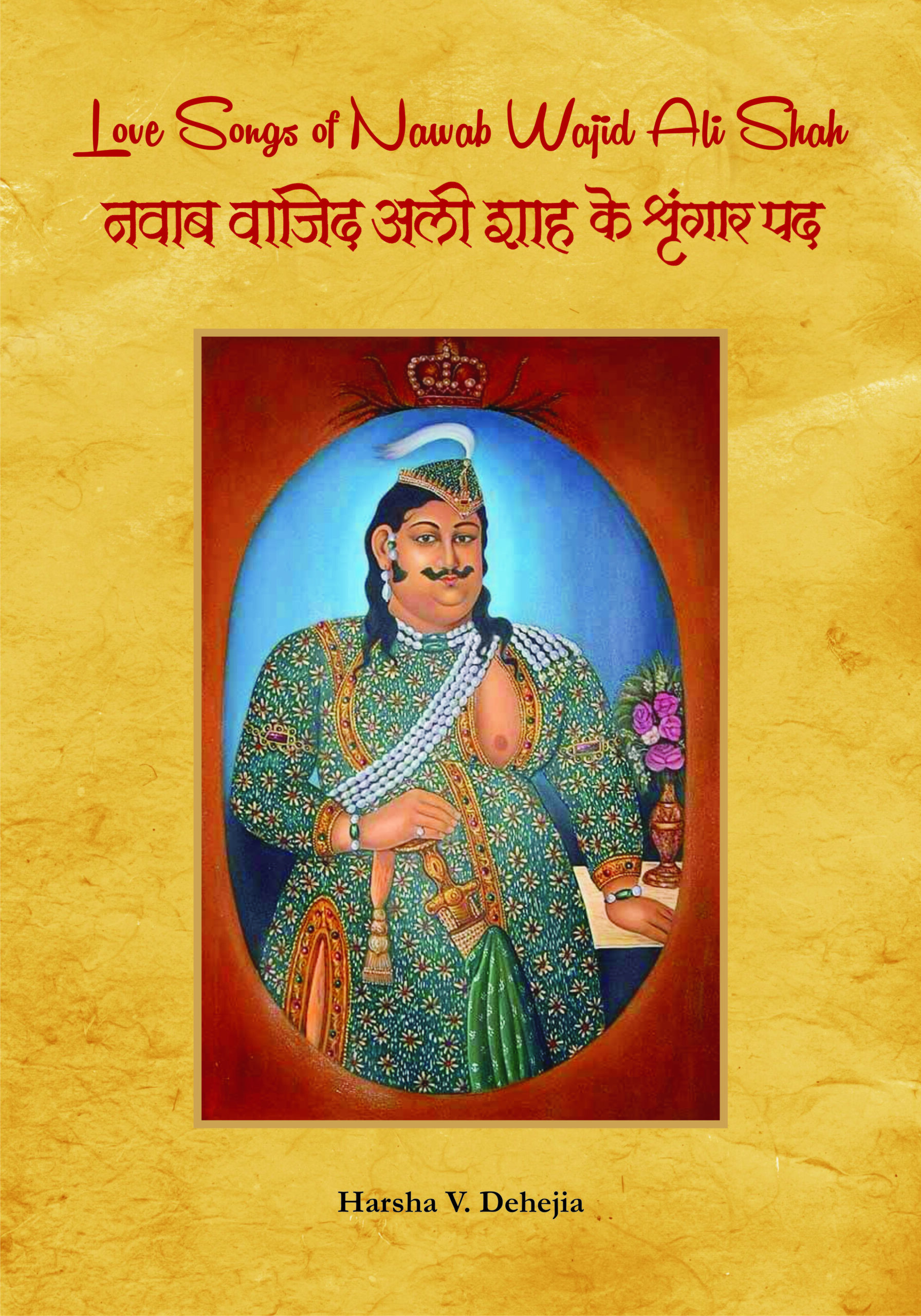-

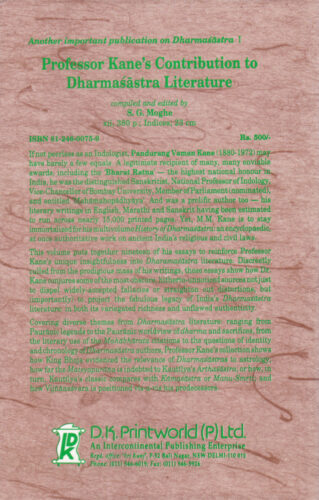
Companion to Dharmas...
Companion to Dharmasastra
by: Sures Chandra BanerjiThis work highlights the Dharmashastra essentials by listing the major authors with their biographies, titles and their dates of composition, published editions and commentaries. It shows how Dharmashastra works have influenced the Indian way of life.
₹315.00
ISBN: 9788124600986
Year Of Publication: 1998
Edition: 1st
Pages : xiv, 265
Bibliographic Details : 12 Appendices; Glossary; Select Bibliography
Language : English
Binding : Hardcover
Publisher: D.K. Printworld Pvt. Ltd.
Size: 23 cm.
Weight: 500 gm.
Dharmashastra is not just a corpus of scriptural texts. It is rather a genre, in its own right, of writings comprising prescriptive codes of righteous conduct in different spheres: whether familial, societal, ritualistic, legal, or even political. For the first time, this book offers a quintessential view of the Dharmashastra (Smriti) literature. Which today, along with its digests and commentaries, looks like a vast reservoir of literary works that have been accumulating over the centuries since their legendary beginnings with Manu. Designed primarily for reference, this Companion is styled and structured to bring forth the Dharmashastra-essentials in the quickest time. Listed here, alphabetically, are the major authors with their biographical sketches. And, these besides, the titles, together with descriptive details of their thematic content, dates/probable dates of their composition, published editions and commentaries their upon. Also included here are as many as 12 appendices which, in their totality, embody Dharmashastra-based information on geography, flora and fauna, mixed castes/tribes, neo-Smriti schools, and the kind of relation Smriti literature has with the Mahabharata, Puranas, and Tantra, among other aspects. Professor Banerjis book not only tries to show how Dharmashastra works are representative of the ancient/medieval political, social and cultural milieus, but is also a painstaking attempt to gauge their influence in conditioning the Indian way of life and psyche. Supported by an extensive glossarial index of Smriti literature, it is indisputably a valued companion to the Dharmashastra-specialists, Indologists and the scholars of ancient/medieval Indian sociology.
Preface
Abbreviations
Important Dates
1. Introduction
The Land and the People Dharma Meaning and Source General Remarks
2. Political, Social and Religious Background of Dharmashastra
Political Conditions Social and Religious Conditions
3. Authors
Anantadeva II Angiras Aniruddha Bhatta Aparaditya Apararka Apastamba Asahaya Atri Balakrishna Balambhatta Ballalasena Baneshvara Vidyalamkara Baudhayana Bhavadeva Bhatta Brihaspati Brihaspati Rayamukuta Candeshvara Thakkura (c. ad 1300-50) Candrakanta Tarkalamkara (1836-1909) Daksha Daladhisha Dalapati (Also Called Dalapatiraja, Daladhisha) Devanabhatta Devannabhatta Devanatha Thakkura Tarkapancanana Gautama Gopala Nyayapancanana Govindananda Govindaraja Halayudha Haridasa Siddhantavagisha Harita Hemadri Jagannatha Tarkapanchanana Jimutavahana Kamalakarabhatta Kashicandra Vidyaratna (1854-1917) Kashinatha Upadhyaya Kashirama Vacaspati Bhattacharaya Katyayana Kubera (Upadhyaya, Pandita) Kullukabhatta Lakshmidhara Likhita Madanapala Madhavacharya Manu Medhatithi Misaru (u) Mishra Mitramishra Nagesha Nagojibhatta or Nageshabhatta Nandapandita Narada Narayanabhatta (Jagaduru) Nilakantha Bhatta Parashara Prataparudradeva Raghunandana Rayamukuta Rudradhara Shamkha Samvarta Sarvorusharma Trivedin Shatatapa Shridatta Shridhara Shrikrishna Tarkalamkara Shrinatha Acharya-cudamani Shulapani Sumantu Todarmal Ushanas Vacaspati Mishra Vaidyanatha Payagunda Vallalasena Varadaraja Vardhamana Vash(s)istha Vidyapati Vijnaneshvara Vishnu Vishvarupa Vyasa Yajnavalkya Yama
4. Works
Acharadarsha Angiras-Smriti Anukramani or Nirnaya-Sindhu-Anukramanika Apararka Apastamba-Dharmasutra Ashtavimshati-Tattva Atri-Smriti (Atri Samhita or Atreya Smriti or Atreya Dharmashastra) Aushanasa-Dharmashastra Balakrida Balambhatti Baudhayana-Dharmasutra Brahmana-Sarvasva Brihaspati-Smriti Caturvarga-Cintamani Chandoga-Paddhati Daksha-Smriti Dana-Kriya-Kaumudi Dana-Ratnakara Dana-Sagara Dandaviveka Dasha-Karmapaddhati Dattaka-Candrika Dattaka-Mimamsa (Also Called Datta-Putra-Nirnaya-Mimamsa or Putrikarana-Mimamsa) Dayabhaga Dayabhaga-Prabodhini Dharma-Ratna Dharma-Ratna Dharma-Sindhu-Sara or Dharmabdhi-Sara Dharma-Tattva Dipakalika Dolayatra-Viveka Durga-Bhakti-Tarangini Durgotsava-Viveka Ganga-Vakyavali Gautama-Dharmasutra Grihastha-Ratnakara Haralata Harita-Smriti Kala-Sara Kala-Viveka (Ad 1092) Karmanushthana-Paddhati Karmavipaka Karmopadeshini Karmopadeshini-Paddhati Katyayana-Smriti-Saroddhara Kriya-Kaumudi Kritya-Cintamani Krityakalpataru Kritya-Ratnakara Kritya-Tattvarnava Likhita-Smriti Madana-Parijata Manava-Dharmashastra Manu-Bhashya Manu-Smriti Manu-Tika Manvartha-Muktavali Mitakshara Narada-Smriti Nirnaya-Kamalakara Nirnaya-Sindhu (ad 1612) Nirnaya-Sindhu-Anukramanika Nrisimha-Prasada (ad 1490-1512) Nyaya-Matrika Parashara-Smriti Parashara-Madhava Parashara-Smriti Pitridayita Prayashcitta-Prakarana (or-Nirupana) Prayashcitta-Viveka Puja-Ratnakara Rajaniti-Ratnakara Rasayatra-Viveka Sambandha-Cintamani Sambandha-Viveka Shamkha-Likhita-Dharmasutra Shamkha-Smriti Samskara-Paddhati Samvarta-Smriti Sarasvati-Vilasa Shatatapa-Smriti Smriti-Candrika Smriti-Cintamani Smriti-Kaumudi Smriti-Kaustubha Smritimanjari Smriti-Ratna-Hara Smriti-Ratnakara Smriti-Sara Smriti-Sara-Samuccaya Smriti-Tattva Shraddha Kriya-Kaumudi Shraddha-Sagara Shraddha-Viveka Shuddhi-Kaumudi Shuddhi-Ratnakara Tirtha-Cintamani Tithi-Nirnaya Tithi-Viveka Tristhalisetu (Shaka 1540 = ad 1618) Uddhara-Candrika Udvaha-Candraloka Varsha-Kriya-Kaumudi Vasishtha-Dharmasutra (or-Dharmashastra) Viramitrodaya Viruddha-Viddhi-Vidhvamsa Visnu-Dharmasutra (or-Smriti) Vivda-Bhangarnava Vivada-Candra Vivada-Ratnakara Vivadarnava-Setu Vivada-Sararnava Vivaha-Tattvarnava Vrata-Kala-Viveka Vyasa-Smriti Vyavahara-Cintamani Vyavahara-Matrika or Nyaya-Matrika Vyavahara-Mayukha Vyavahara-Ratnakara Yajnavalkya-Smriti Yama-Smriti
5. Aspects of Society in Ancient and Medieval India : Reflected in Smriti-Shastra
Position of Women
Sati-Daha (Burning of Widows)
Polygamy
Divorce
Remarriage of Women
Prostitution
Levirate (Niyoga)
Shudras and other So-called Low-class People
Slavery
Untouchability
Euthanasia
Democratic and Socialistic Trends in Manu-Smriti
Basic Juridical Principles
Judicial Procedure
Guiding Principles for Administration of Justice
Raja-Dharma (Politics and Statecraft)
Moral and Ethical Principles in Smriti-shastra
Relation between Son and Parents
Relation between the Teacher and the Taught
Relation between the Husband and the Wife
Appendix 1: Mahabharata and Smriti
Appendix 2: Purana and Smriti
Appendix 3: Tantra and Smriti
Appendix 4: Principal Schools of Navya-smriti and Names of their Main Exponents
Appendix 5: Inter-relations among Different Schools of Neo-smriti
Appendix 6: Theories on Creation in Manu-smriti
Appendix 7: Flora and Fauna in Manu-smriti
Appendix 8: Geographical Information in Manu-smriti
Appendix 9: Mixed Castes and Tribes Mentioned in Manu-Smriti
Appendix 10: Manu Abroad
Appendix 11: A Classified List of Smriti Works
Appendex 12: Manus Recipe for Health and Hygiene
Glossarial Index of Smriti Literature
Select Bibliography


